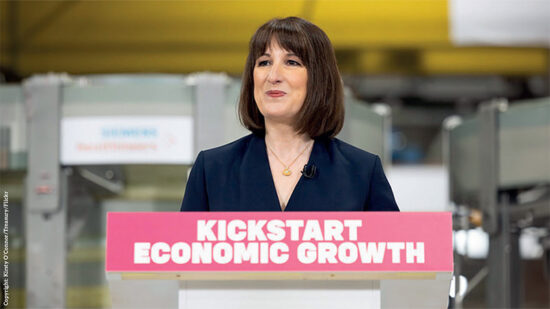The retail investor has been spooked by the inactive 60/40 portfolio and the erratic behaviour of the markets to look towards the high returns from illiquid assets.
This has led to the rise of the alternative asset class, and now the Financial Conduct Authority (FCA) has set out rules to give retail investors and more defined contribution (DC) pension schemes access to Long Term Asset Funds (LTAF).
The LTAF is a newly created type of open-ended authorised fund, which the UK regulator introduced in 2021, designed to invest efficiently in long-term, illiquid assets, such as venture capital, private equity and private debt, real estate and infrastructure.
LTAFs are a higher risk product – that can provide greater diversification to investment portfolios in exchange for potentially higher returns but less immediate liquidity and longer redemption periods.
International Adviser spoke with Arbuthnot Latham, Close Brothers Asset Management, Dowgate Wealth, St James’s Place (SJP) and GSB about what investors and advisers should be careful of when seeking strong investment returns from alternatives and illiquid assets; what the problems are with illiquid assets that investors should be aware of; and where investors should be looking for higher returns.
‘May not be suitable’
Dean Kemble, chief commercial officer at GSB emphasises that while alternatives have their place in some investors’ portfolios, particularly thorough due diligence is required.
“When considering investment into alternatives the issue of illiquidity needs to be considered as a key factor,” he said. “For those in retirement, or reliant on their wealth to provide an ongoing income, seeking excess returns through illiquid alternatives may not be suitable.
“Many alternative or illiquid investment providers may operate outside more traditionally regulated investments, and so care must be taken by investors to ensure the opportunities are both safe and suitable.
“It is imperative that advisers spend the time understanding the investors’ risk appetite, knowledge, experience and wealth before introducing alternative and illiquid opportunities.”
‘Smaller portion’
Kemble went on to say that for investors with excess wealth and a long-term, alternatives can form part of a portfolio strategy by providing further diversification of an investor’s asset base, while maintaining a low correlation to traditional markets.
He added: “Due to the high-risk and illiquid nature of alternative investments, it is recommended investors hold a much smaller portion of their asset base in such investments.
“The additional complexity and costs associated with alternative investments also needs to be considered with reference to the investor’s knowledge and experience of investment markets. The potential opportunity within alternative investments must be weighed up alongside the known risks for investors.”
‘Fixed income now offers a fair return’
Eren Osman, managing director, wealth management at Arbuthnot Latham says he is shifting from alternatives into fixed income.
“As painful as the market volatility was for many investors in 2022, it has unquestionably improved the future risk-adjusted returns across most major asset classes,” Osman said. “Fixed income now offers a fair return in exchange for the corresponding level of risk.
“It doesn’t feel like that long ago that we were discussing the $18trn (£14.2trn, €16.5trn) global debt pile that demanded investors accept a negative return. Rather than the negative yield chipping away over a decade, it played out last year in a highly compressed period as interest rates quickly normalised.
“Now though, we can achieve a long-term return of around 3-4% on government debt and somewhere around five percent from investment-grade corporate bonds. Faced with this huge shift in market dynamics we have already begun and will continue to shift from hedge funds, commercial property and alternatives into more liquid, high-quality corporate bonds.
“For higher returns, there are pockets of the fixed-income complex that are offering substantial rewards, albeit for a higher level of risk. European subordinated financial bonds (CoCos) for example are well priced just now: a high single-digit yield is available from an issuer rating of A- which means that investors don’t need to compromise on liquidity or quality for an attractive return.
“A second area of opportunity, where mid-teen yields are available, is in the Asian high-yield sector, a fair proportion of which comprises debt issued by Chinese property companies. Here, there is an acceptance of default risk, with some property companies unlikely to remain liquid in a challenging market backdrop, but the increased level of support from the Chinese government should prove sufficient to reward investors.”
‘Trapped capital’
When it comes to what investors should know about illiquid assets, Osman says they must be able to accept the risks.
Osman added: “The key issue for investors to appreciate about illiquid assets is very simple – the assets are illiquid. In normal market conditions, various fund structures that offer investors access to illiquid underlying assets, whether in property, private markets or other alternatives, can play a key role in a diversified portfolio.
“Such investments can provide attractive long-term returns and will normally reduce the overall portfolio volatility, though this is partly a function of the less frequent pricing adjustment relative to liquid assets.
“It is often the case that investors request the return of their capital at around the same time, whether due to wider market conditions or perhaps a poor spell of performance for a particular manager.
“In such circumstances, regardless of the innovative liquidity features of the fund structure, investors are faced with trapped capital. This does not mean that such investments should be avoided, but that investors are able to accept these risks and are confident that they will be sufficiently rewarded for doing so.”
Look beyond income yield
Considering whether investors and advisers should be careful when looking for good returns in alternatives and illiquid assets, Josh Ross-Field, investment director at Dowgate Wealth, said that they should not buy solely based on the income yield and should look more closely at how the net asset value of the underlying asset or fund is calculated.
“Discount rates used should be reflective of the recent rise in risk-free rates; if rates go higher than expected the value of the underlying assets may fall further,” he added.
Ross-Field also looked at fixed income as one potential area of opportunity for higher returns.
“There are plenty of Reits and private equity funds that are trading on large discounts which is reflective of the uncertainty around asset valuations,” Ross-Field said. “It’s during periods of volatility that investors can take advantage of the mispricing of such assets − we saw a similar opportunity in the bond markets in September 2022.
“It will be worth watching which funds and managers are buying back their own stock after the current price moves. We had very little allocation to corporate bonds until last year when interest rates started to normalise. We believe that short-dated individual corporate bonds can provide a stable and predictable level of income at levels we haven’t seen for many years and offset volatility of the equity markets.
“Bond ratings agencies such as Moody or S&P evaluate the bond issuers’ financial strength and capacity to repay the principal and interest. Generally, the lower down the rating scale you go the higher the yield of the bond.”
‘Capital value may fluctuate’
Ross-Field says liquidity should be front of mind for investors, when investing in illiquid assets.
“The bond market can be illiquid and if you need to sell before maturity the capital value may fluctuate,” he added. “It is also worth noting that corporate qualifying bonds do not give rise to any chargeable gains. We have allocated money to low-coupon short-dated gilts too, where for higher-rate taxpayers the gross return is over 6.5%.”
“If you require access to the funds, it is also worth considering the liquidity of the underlying investment, as we have seen some property funds closed to redemptions. If you were to invest in private-equity funds you should pay close attention to the computation of the asset value as there may be a lag in receiving valuations from underlying managers.”
A focus on forward-looking, risk-adjusted returns
Alec Slater, senior alternative investment analyst at Close Brothers Asset Management, said that the industry sees many idiosyncratic risks when investing in different alternative investments, which can include illiquidity.
So, he believes that are a couple of “crucially important” areas that you need to focus on when investing in the asset class.
Slater said that you need to ensure that there is a suitable, forward-looking return premium for this additional illiquidity risk, the structure you are investing in is appropriate for the investment time horizon of the mandate, and blending the investments to diversify the idiosyncratic risks.
He added: “We do not believe that backward-looking high returns should be the focus. Instead, we focus on forward-looking risk-adjusted returns; how we can model expected returns for the diverse range of alternative assets we look at; and what measures of risk are most appropriate to use.
“For instance, we currently see high-risk adjusted returns in some of our infrastructure investments due to conservative valuations that benefit directly from inflation, and in private debt, shorter-duration, floating-rate exposure has recently benefited from lending at increasingly higher rates for longer. Both of these offer internal rates of returns in the double digits.
“Liquid alternative investments which make up a large proportion of our assets under management include the investment-trust sector which offers exposure to sectors such as infrastructure, property, private equity, private debt and hedge funds. They are an important tool for investors to access strong, risk-adjusted returns which are diversifying due to their low correlation to traditional asset classes − equity and fixed income.
“Therefore, the trend towards selecting optically lower-cost investments and excluding the most accessible alternatives such as investment trusts, due to their apparently relatively higher headline operating cash-flow figures may not result in better performance outcomes.
“Our overweight position in alternatives has been a strong area of outperformance for our portfolios in recent years.”
Private markets
Ingrid Neitsch, head of private equity and debt at St James’s Place, said that private markets naturally have a long-time horizon with differing factors.
She believes that there is a wide range of diversification possible within the private-market world across asset classes, holding periods, security and downside protection, which enables investors to pick strategies that align with their values, goals and timings.
“The greatest benefit of the long-term investment strategy inherent in private markets is that investment decisions aren’t under pressure to please a diverse group of shareholders, who demand short-term performance at the expense of building for the long term,” she said.
“At the same time, private markets are not identical. A diversified portfolio can be built across private equity, private credit, infrastructure and property. Each area has different investment horizons, underlying security and risk.
“For example, private-credit investments return money more quickly than private equity, typically in about half the time, and can be reinvested faster. Private credit typically has a stronger claim on underlying assets than private equity. Private equity, however, can produce returns twice as high as private credit.”








